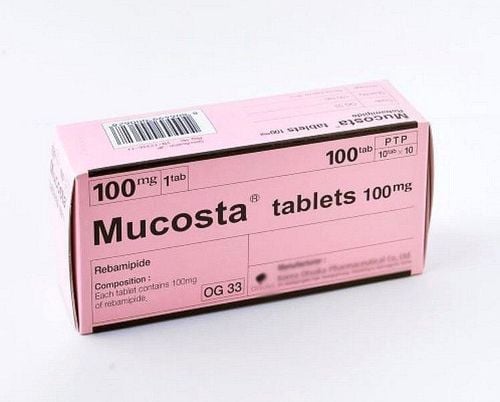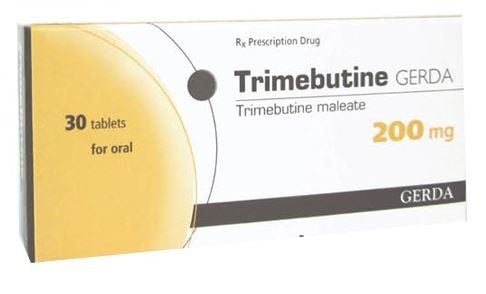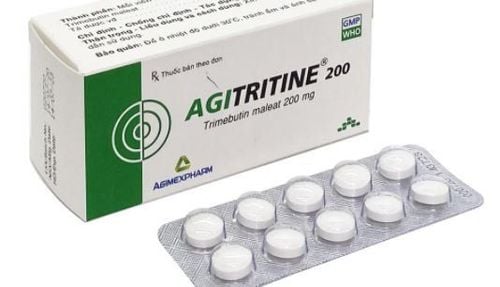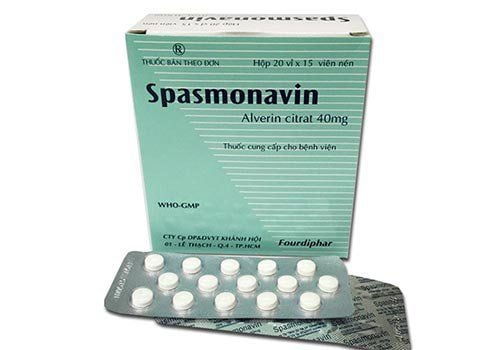This is an automatically translated article.
Nexium 10mg and Nexium 40mg are drugs indicated in the treatment of gastroesophageal reflux disease - oesophagitis for children. To better understand the use of Nexium 10mg, what is it? How to drink? What points should be kept in mind when using? The following article will help you better understand Nexium 40mg and Nexium 10mg.
1. What is Nexium 10mg and Nexium 40mg?
Nexium Mups is an anti-gastric film-coated tablet with the main active ingredient being Esomeprazole and is indicated in the treatment of conditions such as gastroesophageal reflux disease (GERD), peptic ulcers. and Zollinger Ellison syndrome.1.1. Composition and dosage form Nexium drug 40mg: The drug is prepared in the form of film-coated tablets against gastric juice with the main active ingredient being Esomeprazole 40mg
Nexium 10mg drug: The drug is prepared in the form of granules for suspension. drink. Each pack of Nexium 10mg tablets will contain the following ingredients:
Esomeprazole in the form of Magnesium Trihydrate 10mg. Excipients 1 capsule. 1.2. Pharmacodynamics Esomeprazole is the S-isomer of omeprazole and reduces gastric acid secretion by a specific mechanism of action. The drug is a specific inhibitor of the acid pump in parietal cells. Both the R- and S- isoforms of omeprazole have similar pharmacodynamic effects. Esomeprazole is a weak base that is concentrated and converted to the active form in the highly acidic environment of the secretory tubules of parietal cells, where it inhibits the H+K+-ATPase pump and both basal and stimulated secretions.
1.3. Pharmacokinetics The drug is rapidly absorbed and the absolute bioavailability is 64% after a single 40 mg dose and increases to 89% after repeated once-daily dosing. The drug is 97% bound to plasma proteins. Esomeprazole is completely metabolised by the cytochrome P450 (CYP) system and is largely dependent on the polymorphic CYP2C19 enzyme, with the remainder being CYP3A4. Approximately 80% of an oral dose of omeprazole is excreted in the urine as metabolites, with the remainder in the feces. Less than 1% of unchanged drug was recovered in the urine.
2. What disease does Nexium treat?
Nexium and similar brand-name drugs that also contain esomeprazole are used in the following cases:
Treatment of gastroesophageal reflux, oesophagitis: A known condition with symptoms such as belching, heartburn. , chest pain, nausea, hoarseness, cough... Treatment of stomach and duodenal ulcers caused by HP (H.Pylori) infection. When detecting HP infection, the doctor may prescribe antibiotics along with antibiotics. Gastric ulcers are caused by prolonged use of anti-inflammatory pain relievers. Nexium can be used by your doctor with an anti-inflammatory pain reliever to prevent future stomach ulcers. Zollinger-Ellison syndrome: a condition that causes excess acid in the stomach.
3. Undesirable effects
For the recommended dose may experience undesirable effects such as:
Headache. Abdominal pain, diarrhea, constipation, bloating, vomiting, nausea. Dizzy. Dry mouth. Increase liver enzymes. Peripheral edema. Fractures of the hip, spine or wrist,... When you observe any side effects, you should immediately notify your doctor for appropriate indications.
4. How to use Nexium 10mg and Nexium 40mg effectively
4.1. How to use Nexium 10mg medicine How to prepare the medicine:
Put the entire amount of nuggets in the package into a cup that will contain about 15ml of water. In case of using 2 sachets, mix with 30ml of water. Stir until the nuggets are evenly dispersed and let stand for a few minutes to thicken. Then, stir again and drink within 30 minutes. Swallow the suspension directly and do not chew or crush the nuggets. Rinse the cup with 15ml of water to make sure you take the full dose. Drink about 1 hour before breakfast. Dosage
Children from 1 to 11 years old weighing ≥ 10kg.
Esophagitis caused by reflux is determined by endoscopy (treatment for 8 weeks):
Weight from 10 - 20 kg orally: 1 pack/time/day. Weight over 20kg orally: 1-2 sachets/time/day. Symptoms of gastroesophageal reflux disease - oesophageal: 1 sachet/time/day for 8 weeks.
Children from 4 years old and up .
Dosage 2 times / day for 1 week. Recommended dose: Weight < 30 kg, the dose will be 10mg of Esomeprazole in combination with 25mg/kg Amoxicillin and 7.5mg/kg Clarithromycin. Weight from 30-40kg dose is: 20mg Esomeprazole combined with 750mg Amoxicillin and 7.5mg/kg Clarithromycin. Weight >40kg with dose: 20mg Esomeprazole combined with 1g Amoxicillin and 500mg Clarithromycin. 4.2. How to use the drug Nexium 40mg You should not chew or hold the drug dissolved in the mouth nor should you crush the medicine or put the drug dissolved in a glass of water. The medicine should be taken properly by swallowing the tablet whole with water.
For children who cannot swallow whole tablets, this time can switch to using the drug in the form of powder sachets mixed with suspension for oral administration.
Dosage
Dosage in the treatment of gastroesophageal reflux disease (GERD):
Treatment of erosive esophagitis caused by reflux: 40 mg, once a day for 14 weeks. Long-term treatment of patients with healed esophagitis to prevent recurrence: 20mg, once daily. Symptomatic treatment of gastroesophageal reflux disease (GERD): 20 mg, 1 time / day. Dosage in combination with an appropriate antibacterial regimen for the eradication of Helicobacter pylori:
Nexium Mups 20 mg will be combined with amoxicillin 1 g and clarithromycin 500 mg, all given twice daily for 7 days. Dosage in case of prolonged treatment after intravenous treatment to prevent re-bleeding from peptic ulcer:
40 mg once daily for 4 weeks. Dosage in the treatment of Zollinger Ellison syndrome is:
The recommended starting dose is 40 mg twice daily. Then adjust according to individual patient response. Clinical data show that the majority of patients are controlled with doses of 80-160 mg/day. When the daily dose is greater than 80 mg, the dose should be divided into 2 times/day. Note: The above dosage is for reference only and this specific dose will depend on the condition and progression of the disease. Therefore, to get the right dose, you need to consult your doctor or medical professional.
4.3. What to do in case of an overdose? To date there is little experience with intentional overdose. The symptoms described to be associated with the 280 mg dose are gastrointestinal symptoms and fatigue.
There is no specific antidote. In case of overdose you should treat symptomatically and use general supportive measures.
4.4. What to do if you miss a dose? Add dose as soon as you remember. However, if the interval between the next dose is too short, skip the missed dose and resume your dosing schedule, and you should not take a double dose to make up for the missed dose.
5. Notes when using Nexium
5.1. For pregnant and lactating women There are no clinical data on the use of the drug in pregnant women. Safety as well as risks in the fetus have not been fully established. Therefore, caution should be exercised when prescribing this drug.
It has not been proven whether the drug is excreted in breast milk or not. The effect of the drug on the nursing infant is unknown. Therefore, do not use the drug while breastfeeding.
5.2. For drivers and operators of machines No adverse effects related to the ability to drive and use machines have been observed. Therefore, can be used on this group of objects.
6. How to store Nexium?
Do not store the medicine in a place where the temperature is above 30 degrees Celsius. Store the medicine in its original blister (tablet form), or in the package (powder form) when not in use to avoid environmental influences. Do not tear the medicine from the blister pack until it is in use.
Hopefully, the information about Nexium will help you know how to use it safely, effectively and minimize side effects on the patient's body.
Please dial HOTLINE for more information or register for an appointment HERE. Download MyVinmec app to make appointments faster and to manage your bookings easily.













